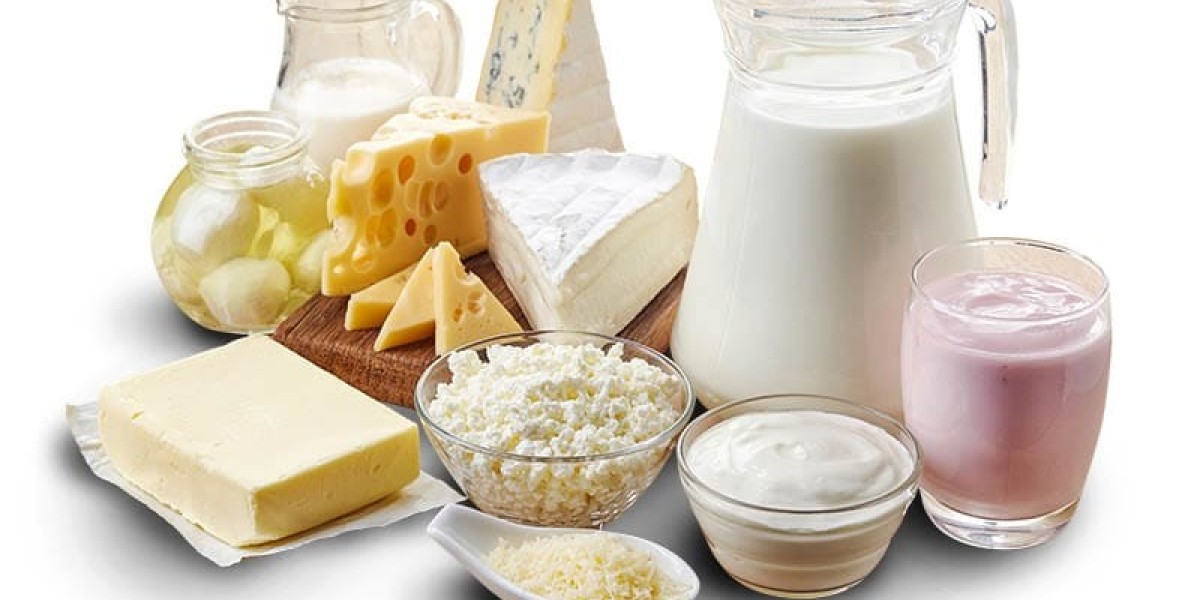Milk Dairy Products Marketing is a dynamic process that involves strategies to engage consumers, increase product visibility, and build brand loyalty. With a wide array of dairy products such as milk, cheese, yogurt, butter, cream, and ice cream, retailers must effectively differentiate these products to meet diverse consumer needs. Successful marketing efforts combine traditional tactics with digital innovations, sustainability initiatives, and a focus on health-conscious trends.
1. Target Audience Understanding
Understanding the target audience is crucial in dairy product marketing. Retail marketers segment consumers based on various factors, including age, health consciousness, lifestyle, and preferences. For instance, families with young children may prefer full-fat milk and flavored yogurt, while millennials and health-conscious buyers may opt for low-fat, lactose-free, or organic dairy products. Additionally, some consumers might seek plant-based alternatives like almond milk or oat milk, prompting retailers to diversify their offerings. This segmentation allows for tailored marketing strategies to effectively meet different consumer demands.
2. Retail Marketing Strategies
Retail marketing of dairy products revolves around creating a strong brand presence in stores and driving sales through various strategies:
Product Placement and Visual Merchandising: In retail settings, dairy products are usually placed in refrigerators or dedicated aisles. To enhance visibility, brands focus on prime shelf space, end-of-aisle displays, and eye-catching packaging. For perishable items like milk and yogurt, ensuring that products are placed at eye level can help increase consumer impulse buying.
Packaging and Labeling: Packaging plays a significant role in the retail marketing of dairy products. Packaging designs often highlight key attributes such as "organic," "local," "sustainable," or "free from antibiotics or hormones." Clear labeling of nutritional content, including fat, protein, and calcium, appeals to health-conscious buyers. Packaging also needs to reflect freshness and quality, especially for milk products, as freshness is a major consideration for consumers.
Promotions and Discounts: Price promotions, discounts, and bundle offers (e.g., "Buy one, get one free" or "3 for $5") are commonly used in retail marketing to drive foot traffic and encourage bulk buying. Special discounts on dairy products during key shopping seasons (such as the holiday period for cheese and milk-based desserts) also play a critical role in boosting sales.
Loyalty Programs: Retailers often implement loyalty programs to foster repeat customers. For instance, offering points for dairy purchases or exclusive discounts on future purchases creates an incentive for consumers to return.
3. Health and Wellness Trends
Milk Dairy Products Marketing consumer interest in health and wellness has increased in recent years, and dairy brands must align their products with these trends. Many consumers are opting for dairy items that are high in protein, low in fat, or fortified with vitamins like D and A. For example, Greek yogurt and plant-based dairy alternatives (like almond or oat milk) have gained popularity due to their perceived health benefits.
Additionally, many retailers emphasize dairy's nutritional benefits—such as calcium for strong bones, vitamin D, and probiotics in yogurt—through advertising and product labeling. Educational campaigns both in-store and online help consumers understand the benefits of incorporating dairy into their diets.
4. Sustainability and Ethical Sourcing
As environmental concerns grow, sustainability has become a key focus in retail marketing. Dairy brands that emphasize ethical sourcing, animal welfare, and eco-friendly production processes resonate with eco-conscious consumers. Packaging that highlights recyclability or biodegradable materials can help build a sustainable brand image.
Furthermore, brands that support local dairy farmers or commit to reducing their carbon footprint through energy-efficient production practices can attract consumers who prioritize environmental sustainability. These initiatives also appeal to consumers who are keen on supporting the local economy and reducing their ecological impact.
5. Digital and Social Media Marketing
The rise of social media has transformed retail marketing, including for dairy products. Brands use platforms like Instagram, Facebook, and TikTok to promote products through visually appealing posts, recipe ideas, influencer collaborations, and customer testimonials. Social media ads often target specific consumer segments with tailored messaging, such as promoting lactose-free products to those with dietary restrictions.
In addition to organic social media, retailers leverage digital advertising and e-commerce platforms to boost online sales of dairy products. With an increasing number of consumers shopping online, especially after the pandemic, having a strong digital presence is essential for the growth of dairy brands.
6. Consumer Education
Effective marketing of dairy products also involves educating consumers about product offerings, benefits, and best usage. Brands often create recipes, how-to videos, or blogs that show how dairy products can be used in everyday meals. This builds brand loyalty and increases product consumption.
Conclusion:
The retail marketing of milk and dairy products requires a blend of traditional marketing practices and innovative digital strategies. By focusing on health trends, sustainability, and personalized consumer engagement, retailers can successfully navigate the competitive dairy market. Whether through strategic product placement, discounts, or building a digital community, effective marketing ensures that consumers not only purchase dairy products but also form lasting connections with the brands they choose.
Naijamatta is a social networking site,
download Naijamatta from Google play store or visit www.naijamatta.com to register. You can post, comment, do voice and video call, join and open group, go live etc. Join Naijamatta family, the Green app.
Click To Download

